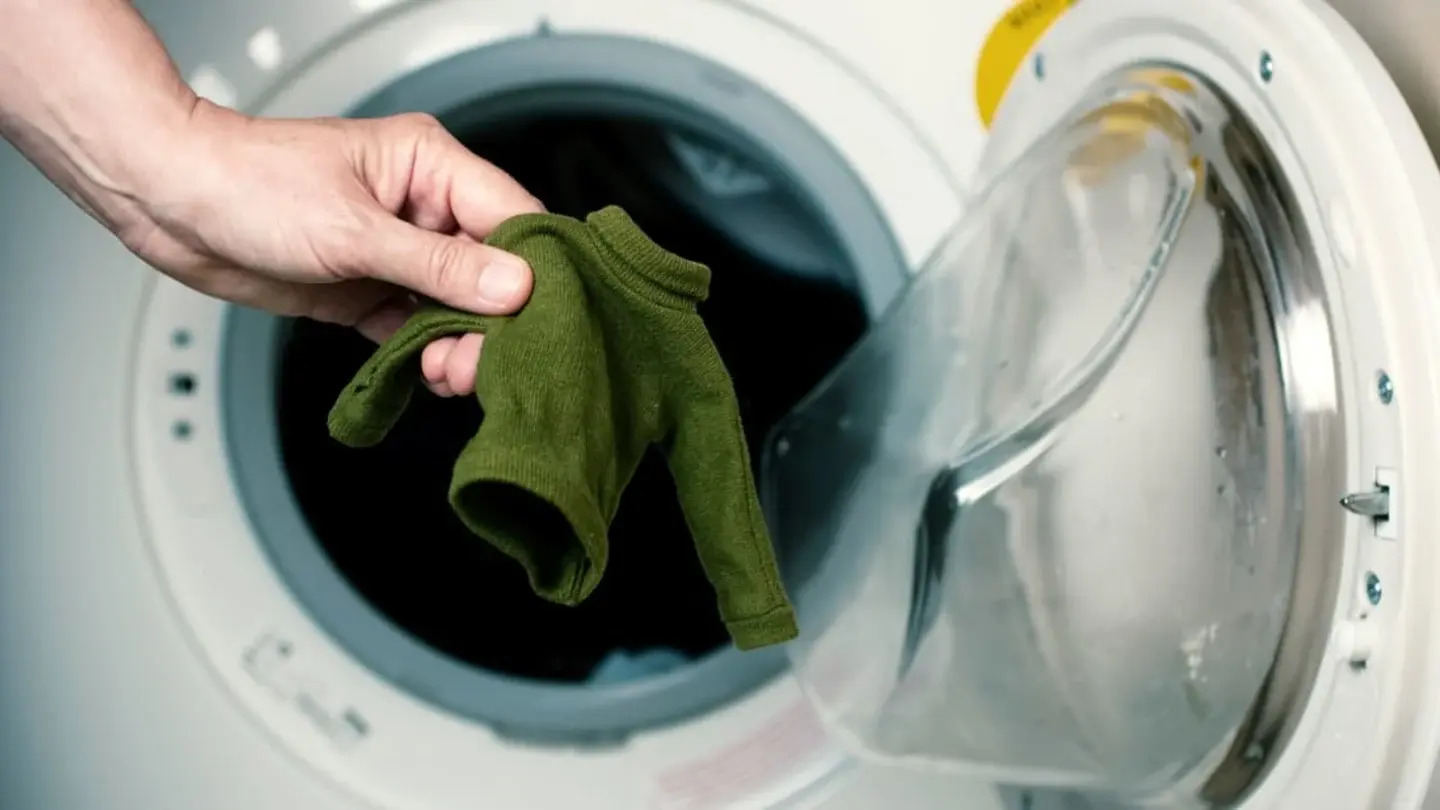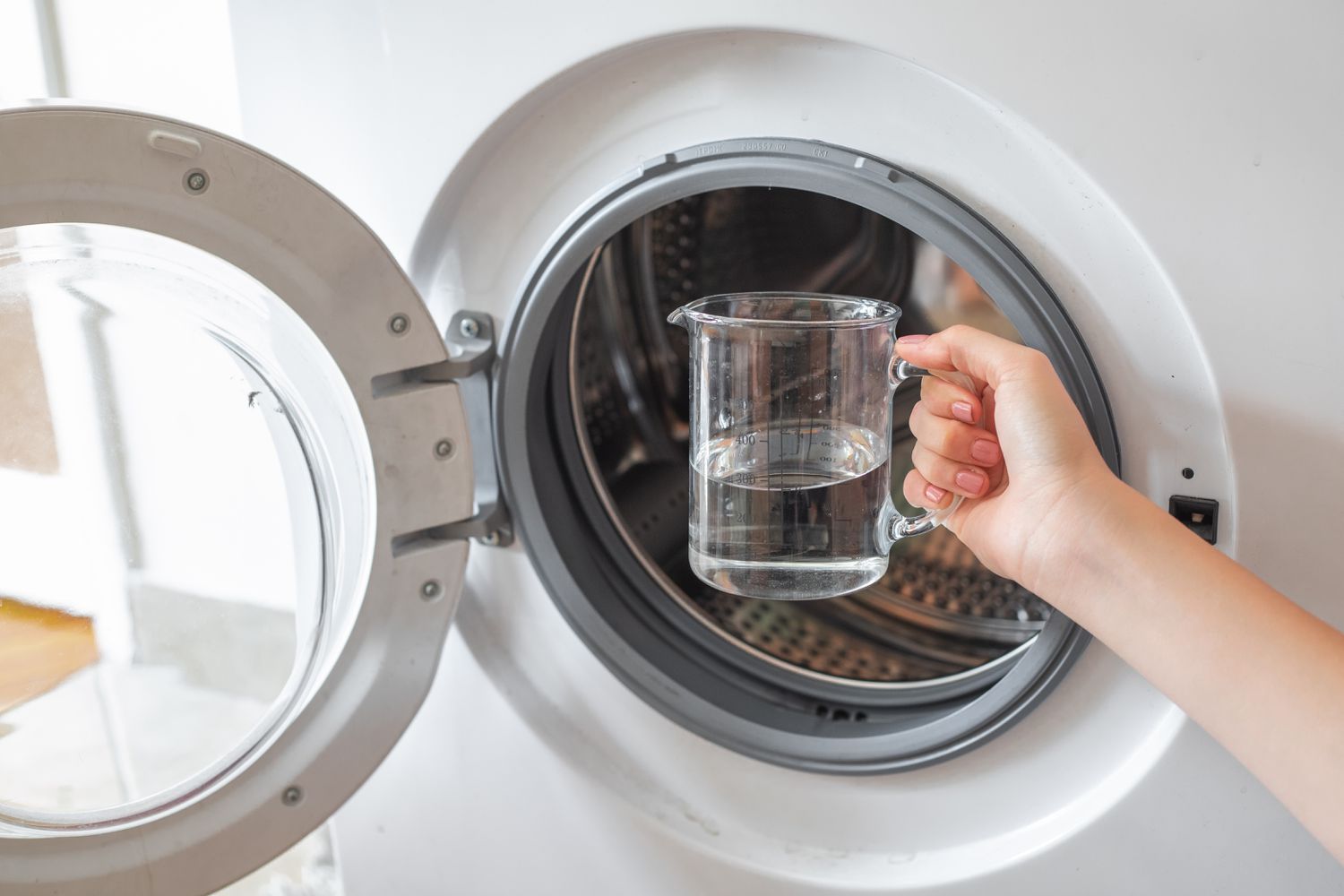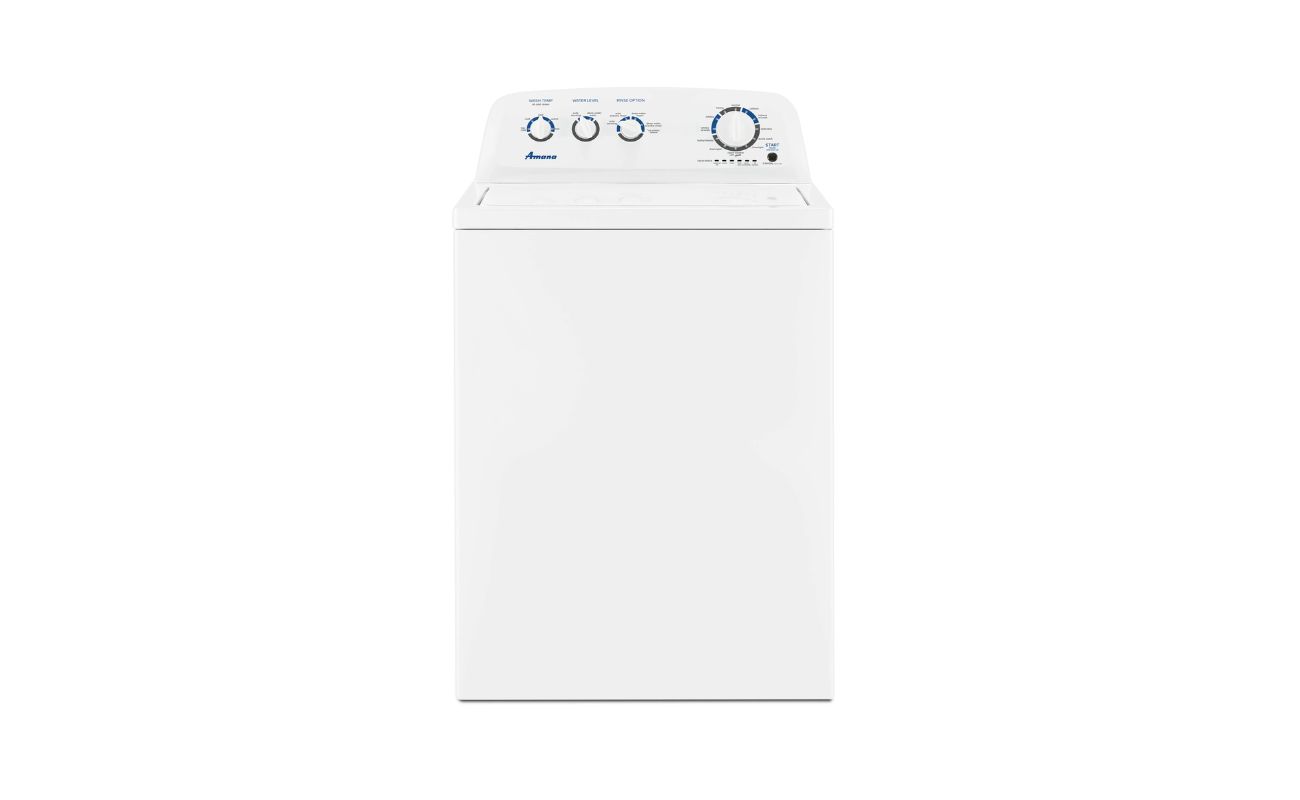Home>Home Appliances>Laundry Appliances>How Does A Washing Machine Clean Clothes


Laundry Appliances
How Does A Washing Machine Clean Clothes
Modified: October 21, 2024
Discover how laundry appliances, like washing machines, effectively clean clothes and make your laundry routine easier. Learn about the technology behind these essential household appliances.
(Many of the links in this article redirect to a specific reviewed product. Your purchase of these products through affiliate links helps to generate commission for Storables.com, at no extra cost. Learn more)
Introduction
Washing machines have become an indispensable part of modern life, revolutionizing the way we clean our clothes. These marvels of modern engineering have simplified and streamlined the laundry process, saving us time and effort. But have you ever wondered how these machines work their magic to rid our clothes of dirt and grime? In this article, we will delve into the intricate mechanisms behind the washing machine's cleaning process, shedding light on the key components and processes that make it all possible.
From the moment you load your soiled garments into the machine to the satisfying hum of the spin cycle, a series of carefully orchestrated steps take place to ensure that your clothes emerge fresh and clean. Understanding these steps can deepen our appreciation for the technology that has become a staple in households worldwide.
As we embark on this exploration, we will uncover the pivotal role of detergent, the significance of the agitation process, the thoroughness of the rinse cycle, and the efficiency of the spin cycle. Additionally, we will examine the impact of water temperature on the overall cleaning efficacy. By the end of this journey, you will have gained a comprehensive understanding of how a washing machine transforms dirty laundry into fresh, clean garments. So, let's roll up our sleeves and dive into the fascinating world of washing machine technology!
Key Takeaways:
- The washing machine’s cleaning process relies on detergent, agitation, rinse, and spin cycles to remove dirt and stains, showcasing the harmonious interplay of technology and human need.
- Water temperature is crucial in achieving optimal cleanliness while preserving garment quality, with cold, warm, and hot water offering distinct advantages for different fabric types and soil levels.
The Role of Detergent
Detergent plays a pivotal role in the cleaning process of a washing machine, serving as the primary agent that eliminates dirt, stains, and odors from your clothes. It is designed to break down and dislodge various types of grime, from food stains to body oils, ensuring that your laundry emerges fresh and spotless.
The chemical composition of detergents is carefully formulated to facilitate the removal of different types of soil from fabrics. They contain surfactants, which are compounds that lower the surface tension of water, allowing it to penetrate the fabric more effectively. Additionally, detergents often contain enzymes that target specific types of stains, such as proteins, starches, or fats, breaking them down for easier removal during the wash cycle.
When the washing machine is in operation, the detergent dissolves in the water, forming a solution that permeates the fabric, binding with the dirt and grime. This process suspends the soil in the water, preventing it from reattaching to the fabric and ensuring that it is rinsed away during the cycle.
Moreover, modern detergents are formulated to work effectively in various water temperatures, catering to the diverse washing needs of different fabrics and soil types. Whether you opt for a cold, warm, or hot wash, the detergent adapts to the temperature, maximizing its cleaning power without compromising the integrity of your garments.
It is important to use the appropriate amount of detergent, as using too little may result in inadequate cleaning, while using too much can lead to excessive suds that hinder the washing machine's performance. Following the manufacturer's guidelines for detergent usage can optimize the cleaning process and prolong the lifespan of your machine.
In essence, the detergent acts as the unsung hero of the washing machine, working tirelessly to lift and remove the dirt and stains that accumulate on our clothes. Its multifaceted composition and adaptability make it an indispensable component in achieving the desired level of cleanliness and freshness in every laundry load.
The Agitation Process
The agitation process is a fundamental stage in the cleaning cycle of a washing machine, playing a crucial role in dislodging dirt and stains from your garments. As the wash cycle commences, the machine's agitator or wash plate initiates a dynamic, back-and-forth motion, creating a gentle yet effective turbulence within the water and detergent solution. This movement causes the fabric to rub against itself and the agitator, facilitating the release of soil particles trapped within the fibers.
The agitation process is particularly adept at targeting stubborn stains and ingrained dirt, as the vigorous movement of the fabric within the soapy water dislodges and suspends the soil, preventing it from resettling on the garments. This continuous agitation ensures that the detergent can penetrate the fabric more thoroughly, maximizing its cleaning efficacy.
In traditional top-loading washing machines, the agitator, a spindle-like mechanism located in the center of the tub, rotates and moves the clothes in a cyclical motion, creating the necessary friction to dislodge dirt and grime. On the other hand, modern high-efficiency top-loaders and front-loaders utilize a wash plate or tumbling action to achieve a similar effect. The wash plate's gentle yet efficient movement allows for a more thorough and uniform distribution of the water and detergent, ensuring that every garment receives the same level of cleaning.
The agitation process is not only instrumental in removing visible stains and odors but also in preventing the redeposition of soil onto the fabric. By keeping the soil suspended in the water, the agitation process prevents it from settling back onto the clothes, ensuring that they emerge from the wash cycle cleaner and fresher.
Furthermore, the agitation process is designed to be gentle on your garments, minimizing wear and tear while still delivering exceptional cleaning results. This balance between effectiveness and fabric care is a testament to the engineering precision behind the washing machine's design, ensuring that your clothes are thoroughly cleaned without compromising their quality.
In essence, the agitation process serves as the dynamic heart of the washing machine's cleaning cycle, harnessing the power of motion to liberate your clothes from the grasp of dirt and stains. Its ability to create a harmonious interplay between water, detergent, and fabric underscores its indispensable role in achieving the desired level of cleanliness in every laundry load.
The Rinse Cycle
The rinse cycle is a pivotal stage in the washing machine's cleaning process, serving as the bridge between the agitation and spin cycles. Once the garments have undergone thorough agitation and the dirt and stains have been dislodged, the rinse cycle steps in to ensure that the soiled water and detergent are effectively removed, leaving the clothes fresh and free of residual grime.
During the rinse cycle, the washing machine fills with clean water, initiating a gentle yet thorough rinsing action that serves to flush out the suspended soil and detergent from the fabric. This process is essential for ensuring that the clothes are not only free from visible dirt and stains but also from any lingering traces of detergent that may compromise their freshness and comfort.
The rinse cycle is designed to be meticulous, with the machine typically performing multiple rinse cycles to guarantee the complete removal of soil and detergent. This attention to detail ensures that your clothes emerge from the washing machine not only clean but also free from any potential skin irritants that may result from detergent residue.
In traditional top-loading washing machines, the rinse cycle involves the agitator or wash plate initiating a gentle swishing motion, allowing the clean water to permeate the fabric and displace the soiled water. In modern high-efficiency top-loaders and front-loaders, the tumbling action ensures that the clean water thoroughly penetrates the garments, carrying away the residual dirt and detergent.
The rinse cycle also plays a crucial role in preserving the integrity of your clothes, as it helps to prevent the accumulation of detergent residue that can lead to fabric stiffness and discoloration. By thoroughly rinsing the garments, the washing machine ensures that they retain their softness, vibrancy, and overall quality, enhancing their longevity and wearability.
Moreover, the rinse cycle contributes to the conservation of water and energy, as it optimizes the use of clean water to achieve the desired level of cleanliness. By efficiently removing the soiled water and detergent, the rinse cycle minimizes the need for additional wash cycles, promoting eco-friendly and sustainable laundry practices.
In essence, the rinse cycle serves as the meticulous guardian of your clothes' cleanliness, ensuring that they emerge from the washing machine not only free from visible dirt and stains but also from any lingering traces of detergent. Its thorough and methodical approach underscores its indispensable role in preserving the freshness, comfort, and quality of your garments.
To ensure your clothes are thoroughly cleaned, separate them by color and fabric type before loading them into the washing machine. This will help prevent color bleeding and damage to delicate fabrics.
The Spin Cycle
The spin cycle marks the culmination of the washing machine's cleaning process, harnessing centrifugal force to expel excess water from the garments. As the rinse cycle draws to a close, the washing machine transitions seamlessly into the spin cycle, initiating a rapid rotation of the drum or tub. This centrifugal force propels the water outwards, effectively wringing out the moisture from the fabric, leaving the clothes damp rather than saturated.
The spin cycle plays a pivotal role in expediting the drying process, significantly reducing the moisture content of the garments before they are transferred to the dryer or the drying line. By removing excess water, the spin cycle not only accelerates the drying time but also minimizes the energy consumption required for subsequent drying methods, contributing to overall energy efficiency.
In traditional top-loading washing machines, the spin cycle is facilitated by a spinning agitator, which rapidly rotates to generate the necessary centrifugal force. In contrast, modern high-efficiency top-loaders and front-loaders utilize a spinning drum, which achieves a similar effect through its rapid rotation. This evolution in design has led to more efficient water extraction and reduced wear and tear on the garments, ensuring that they emerge from the washing machine in optimal condition.
The spin cycle also plays a crucial role in preventing the accumulation of musty odors and mildew within the washing machine. By expelling excess water from the garments, it minimizes the moisture retained within the machine, mitigating the conditions conducive to bacterial growth and unpleasant odors. This proactive approach to maintaining a clean and odor-free washing machine contributes to a hygienic and pleasant laundry experience.
Moreover, the spin cycle enhances the overall cleanliness of the garments, as it effectively removes residual detergent and suspended soil particles that may remain after the rinse cycle. By expelling the water and contaminants, the spin cycle ensures that the clothes emerge from the washing machine not only damp but also free from any lingering traces of dirt and detergent, promoting a thorough and refreshing clean.
In essence, the spin cycle serves as the dynamic finale of the washing machine's cleaning process, harnessing the power of centrifugal force to expedite the drying process and enhance the overall cleanliness of the garments. Its ability to efficiently remove excess water while preserving the integrity of the fabric underscores its indispensable role in achieving the desired level of cleanliness and readiness for subsequent drying methods.
Read more: Why Does My Washing Machine Stain My Clothes
The Importance of Water Temperature
The temperature of the water used in the washing machine plays a pivotal role in determining the effectiveness of the cleaning process. Different water temperatures offer distinct advantages and are tailored to specific laundry needs, fabric types, and soil levels. Understanding the significance of water temperature can empower you to make informed decisions when selecting the appropriate setting for your laundry loads.
-
Cold Water: Cold water is particularly well-suited for delicate fabrics, bright or dark-colored garments, and items prone to shrinking or fading. It provides a gentle yet effective approach to cleaning, minimizing the risk of damage to sensitive materials. Additionally, cold water is energy-efficient, reducing the overall energy consumption of the washing machine and contributing to eco-friendly laundry practices.
-
Warm Water: Warm water strikes a balance between effective cleaning and fabric care, making it suitable for a wide range of laundry loads. It enhances the performance of detergents, aiding in the removal of oily stains and body soils while maintaining the integrity of most fabrics. Warm water is often recommended for everyday clothing, linens, and moderately soiled items, offering a versatile and reliable option for achieving cleanliness and freshness.
-
Hot Water: Hot water is a potent ally in tackling tough stains, grease, and germs, making it ideal for heavily soiled garments, bedding, and towels. The elevated temperature enhances the detergent's cleaning power, effectively breaking down stubborn stains and eliminating bacteria and allergens. However, it is important to exercise caution when using hot water, as it may cause color fading or shrinkage in certain fabrics.
By leveraging the appropriate water temperature for each laundry load, you can optimize the cleaning process, preserve the quality of your garments, and achieve the desired level of cleanliness. It is essential to refer to the garment care labels and washing machine guidelines to determine the most suitable water temperature for each specific item, ensuring that your clothes emerge from the washing machine fresh, clean, and impeccably cared for.
Conclusion
In conclusion, the intricate dance of water, detergent, and motion within a washing machine orchestrates a symphony of cleanliness, transforming soiled garments into fresh, revitalized clothing. From the pivotal role of detergent in breaking down stains to the dynamic agitation process that liberates dirt from fabric fibers, each stage of the washing machine's cleaning cycle contributes to the overall efficacy and thoroughness of the process.
The rinse cycle meticulously ensures the removal of suspended soil and detergent, safeguarding the garments from potential skin irritants and preserving their freshness. Meanwhile, the spin cycle expedites the drying process, expelling excess water and enhancing the overall cleanliness of the garments, setting the stage for subsequent drying methods.
Moreover, the significance of water temperature cannot be overstated, as it tailors the cleaning process to the specific needs of different fabrics and soil levels, empowering users to achieve optimal cleanliness while preserving the integrity of their garments.
As we reflect on the multifaceted mechanisms at play within the washing machine, it becomes evident that the technology not only simplifies the laundry process but also upholds the quality and longevity of our clothing. The seamless integration of science, engineering, and innovation culminates in a choreographed performance that elevates the act of cleaning clothes to an art form.
Ultimately, the washing machine stands as a testament to human ingenuity, offering a blend of efficiency, precision, and care that transcends mere functionality. It embodies the pursuit of cleanliness, comfort, and convenience, enriching our daily lives and allowing us to embrace each day with fresh, clean garments that reflect the meticulous attention to detail woven into every aspect of the washing machine's design.
In essence, the journey from soiled laundry to fresh, clean garments is a testament to the harmonious interplay of technology and human need, culminating in a choreographed symphony of cleanliness that enriches our lives and elevates the act of caring for our clothing to an art form.
Frequently Asked Questions about How Does A Washing Machine Clean Clothes
Was this page helpful?
At Storables.com, we guarantee accurate and reliable information. Our content, validated by Expert Board Contributors, is crafted following stringent Editorial Policies. We're committed to providing you with well-researched, expert-backed insights for all your informational needs.















0 thoughts on “How Does A Washing Machine Clean Clothes”